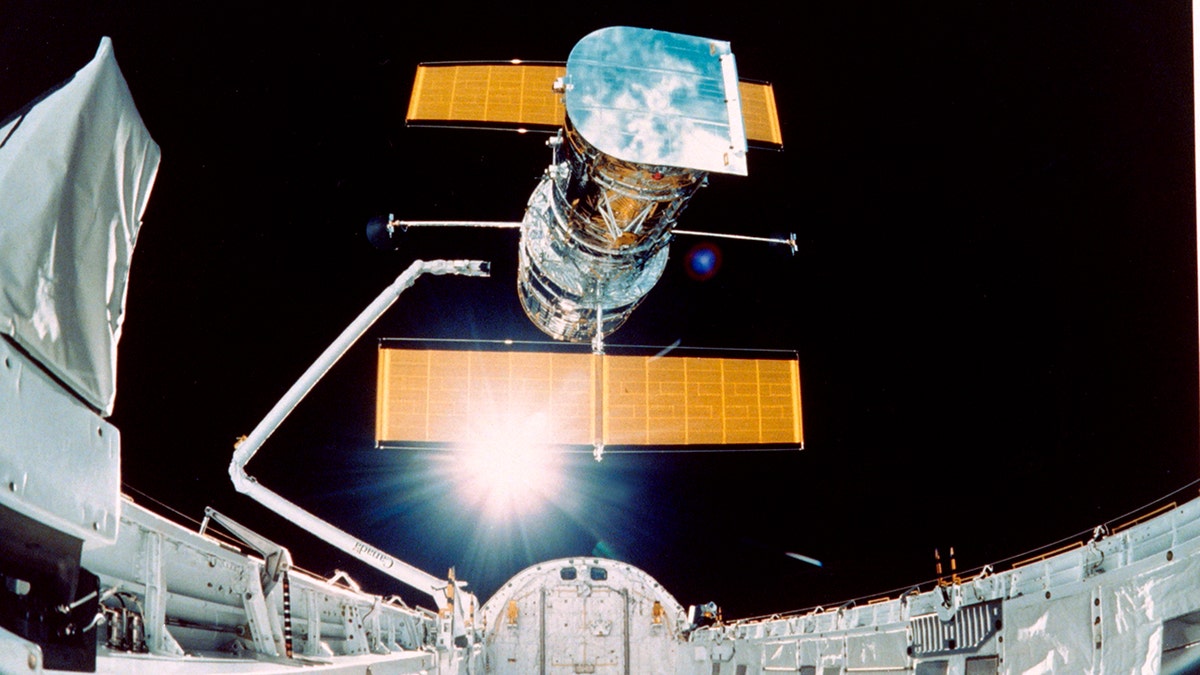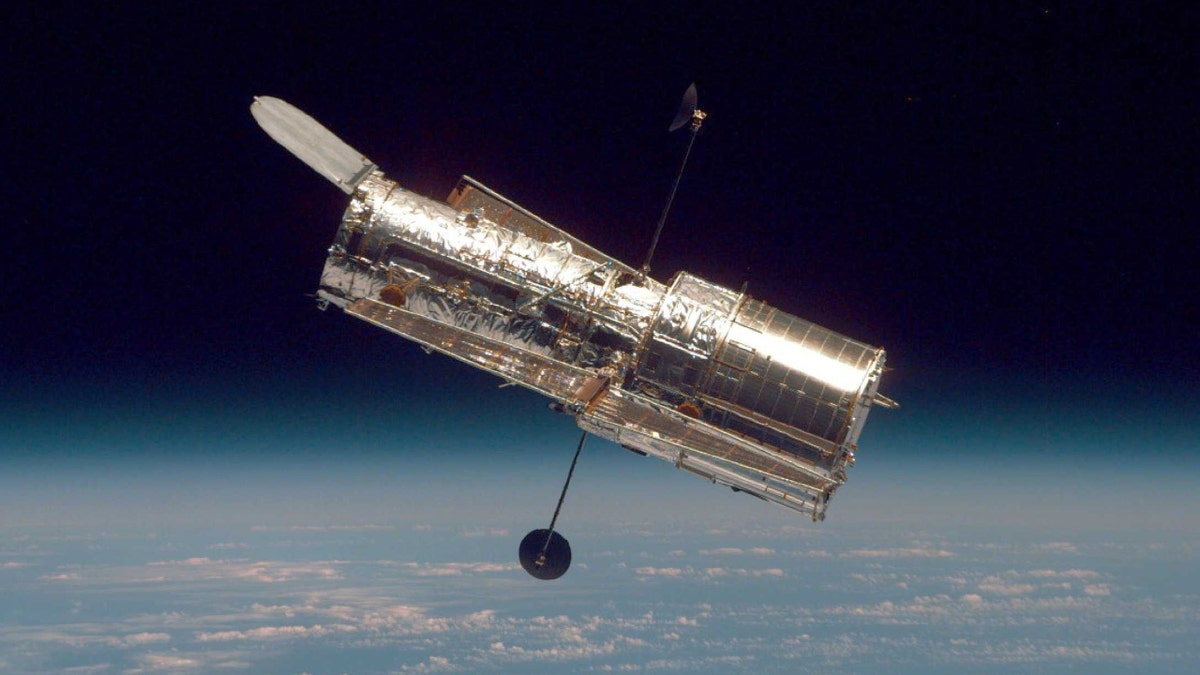The Hubble Space Telescope was deployed on this day in history, April 25, 1990
The Hubble Space Telescope reached space aboard Space Shuttle Discovery — and soon began transmitting spectacular images of the mysteries of the universe snack to Earth.
The Hubble Space Telescope has seen a young planet whirling around a red dwarf star "getting the hiccups."
The agency said the exoplanet is so close to its parent star, AU Microscopii, that is experiencing a consistent and torrential blast of energy.
That blast evaporates its hydrogen atmosphere, causing it to puff off the planet.
While, during one orbit, the planet looked as if it wasn't losing any material at all, observations a year and a half later showed clear signs of atmospheric loss.
WEBB SPACE TELESCOPE TAKES STUNNINGLY DETAILED INFRARED IMAGE OF ACTIVELY FORMING STARS

This artist's illustration shows a planet (dark silhouette) passing in front of the red dwarf star AU Microscopii. The planet is so close to the eruptive star a ferocious blast of stellar wind and blistering ultraviolet radiation is heating the planet's hydrogen atmosphere, causing it to escape into space. Four times Earth's diameter, the planet is slowly evaporating its atmosphere, which stretches out linearly along its orbital path. This process may eventually leave behind a rocky core. The illustration is based on measurements made by the Hubble Space Telescope. (NASA, ESA, and Joseph Olmsted (STScI))
NASA explained that such extreme variability between orbits was a shock to astronomers.
"We've never seen atmospheric escape go from completely not detectable to very detectable over such a short period when a planet passes in front of its star," Keighley Rockcliffe, of Dartmouth College, said. "We were really expecting something very predictable, repeatable. But it turned out to be weird. When I first saw this, I thought 'That can't be right.'"
She noted that it was also puzzling to see the atmosphere puffing off the planet, adding that the observation is kind of a stress-test case for the modeling and the physics about planetary evolution.
The parent star – located 32 light-years from Earth – hosts one of the youngest planetary systems ever observed and is less than 100 million years old.
HUBBLE SPACE TELESCOPE FINDS BOULDERS POTENTIALLY SHAKEN OFF ASTEROID FOLLOWING DART EXPERIMENT

Picture taken by the STS-31 crew aboard the Space Shuttle Discovery showing the Hubble Space Telescope being deployed on April 25, 1990, from the payload bay. (NASA/AFP via Getty Images)
Its innermost planet, AU Mic b, is just six million mays away from the star and is about four times the Earth's diameter.
Stellar flares from young red dwarfs like AU Microscopii blast out radiation and are powered by magnetic fields that get tangled by the motions of the stellar atmosphere.
When the tangling is too intense, the fields break and reconnect. That unleashes energy around 100 to 1,000 times more energetic than our sun unleashes in its outbursts.
"This creates a really unconstrained and, frankly, scary stellar wind environment that's impacting the planet's atmosphere," Rockcliffe stated. Such an event within the first 100 million years of the star's birth could end up stripping a planet of its atmosphere.
Rockcliffe said that scientists want to figure out what kinds of planets can survive such conditions and if there is any chance of habitability there.

In this handout from the National Aeronautical Space Administration (NASA), the Hubble Space Telescope drifts through space in a picture taken from the Space Shuttle Discovery during Hubble's second servicing mission in 1997. (NASA via Getty Images)
Changes in atmospheric outflow from the planet may indicate variability in the host red dwarf's outbursts, with one possible explanation for missing hydrogen that a flare may have photoionized the escaping hydrogen to the point where it became transparent to light and undetectable. Another explanation is that the stellar wind itself is shaping the planetary outflow and causing some of it to "hiccup" ahead of the planet.
CLICK HERE TO GET THE FOX NEWS APP
Although the star's glare prevents a direct view of the planet, Hubble can measure changes in the star's apparent brightness caused by hydrogen bleeding off the planet and dimming the starlight when the planet transits the star.





















